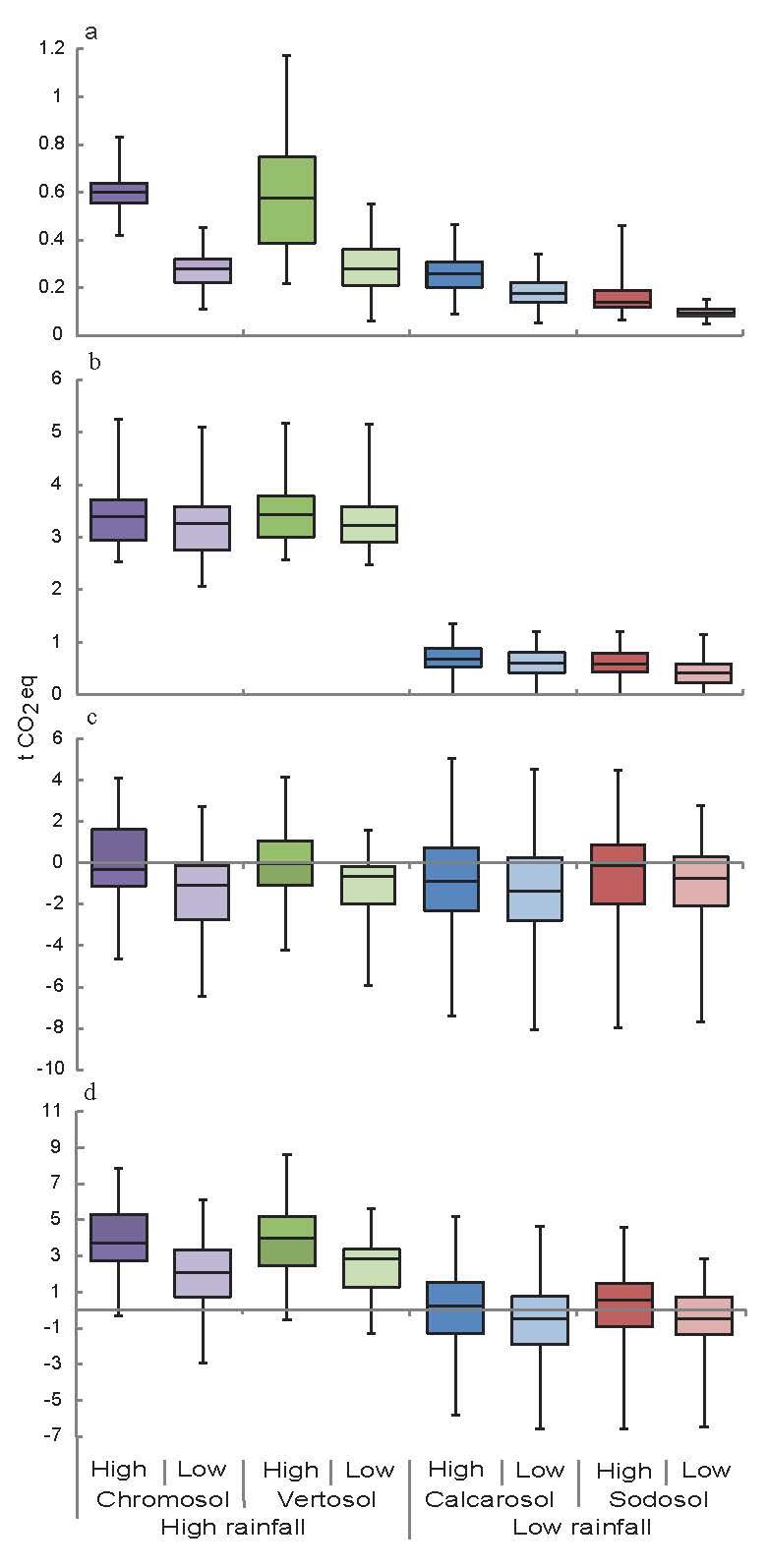Modelling the influence of soil carbon on net greenhouse gas emissions from grazed pastures

Authors: Rachelle Meyer, Brendan R. Cullen, and Richard J., Eckard
Abstract: Sequestering carbon (C) in soil organic matter in grassland systems is often cited as a major opportunity to offset greenhouse gas (GHG) emissions. However, these systems are typically grazed by ruminants, leading to uncertainties in the net GHG balance that may be achieved. We used a pasture model to investigate the net balance between methane (CH4), nitrous oxide (N2O) and soil C in sheep-grazed pasture systems with two starting amounts of soil C. The net emissions were calculated for four soil types in two rainfall zones over three periods of 19 years. Because of greater pasture productivity, and consequent higher sheep stocking rates, high-rainfall sites were associated with greater GHG emissions that could not be offset by C sequestration. On these high-rainfall sites, the higher rate of soil organic carbon (SOC) increase on low-SOC soils offset an average of 45% of the livestock GHG emissions on the modelled chromosol and 32% on the modelled vertosol. The slow rate of SOC increase on the high-SOC soils only offset 2–4% of CH4 and N2O emissions on these high-rainfall sites. On low-rainfall sites, C sequestration in low-SOC soils more than offset livestock GHG emissions, whereas the modelled high-C soils offset 75–86% of CH4 and N2O emissions. Greater net emissions on high-C soils were due primarily to reduced sequestration potential and greater N2O emissions from nitrogen mineralisation and livestock urine. Annual variation in CH4 and N2O emissions was low, whereas annual SOC change showed high annual variation, which was more strongly correlated with weather variables on the low-rainfall sites compared with the high-rainfall sites. At low-soil C concentrations, with high sequestration potential, there is an initial mitigation benefit that can in some instances offset enteric CH4 and direct and indirect N2O emissions. However, as soil organic matter increases there is a trade-off between diminishing GHG offsets and increasing ecosystem services, including mineralisation and productivity benefits.
Citation: Meyer, Rachelle; Cullen, Brendan R.; Eckard, Richard J. 2016. Modelling the influence of soil carbon on net greenhouse gas emissions from grazed pastures. Animal Production Science 56, 585-593.